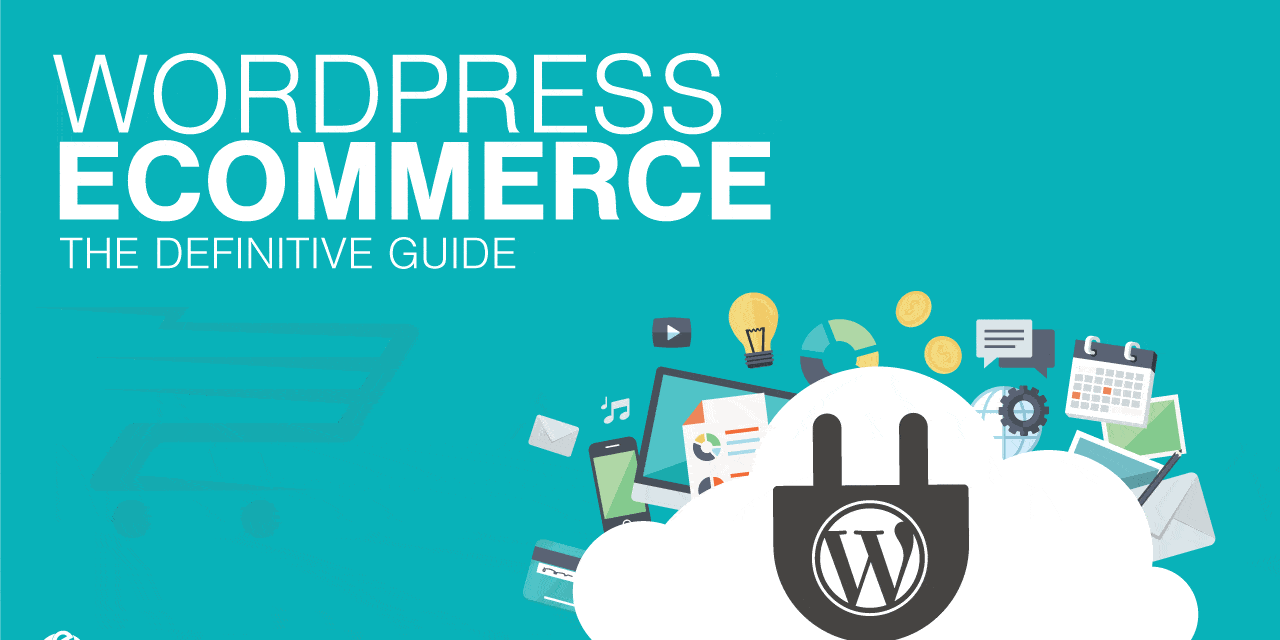As ecommerce has occupied a central position in the market, there is still ongoing chaos in the market related to the tips and tricks to succeed. If you are someone looking to build a wordpress ecommerce website, we genuinely understand your state of mind. As a substantial portion of overall websites live to date are now powered by WordPress, this is the need of the hour to understand it inside out before diving into it. The platform is undoubtedly emerging as persuasive and scalable, apart from the fact that it will not dig a hole in your pocket. The platform is designed to give you a wide range of services, including all you need to start your ecommerce website in just a click. It is, therefore, simpler than ever to establish a successful ecommerce website powered by WordPress, provided you are doing it right.
It takes careful planning and the appropriate market strategies to make your dream ecommerce website turn into a reality. Amidst several ecommerce sellers showing up on the platform each day, you must know the best-suited plan and the right implementation time to convert it into success. If you are also willing to win your users by providing them with the best experience, you have to work on specific aspects while creating a WordPress ecommerce website. Of course, the pros and cons of creating an ecommerce website are numerous, but you should know how to crack it and spread your wings in the market.
Here, we have created an entire guide that is going to help you through the same. How to create an eCommerce website in WordPress is no longer a secret now, as we are going to unveil the entire process through this piece. So, let’s quickly dive in and understand the intricacies of the same.

1: Establishing a brand, selecting the domain name and hosting server
The preliminary steps involve establishing the brand and thinking the things inside out from the very beginning. This is where you lay the foundation stone of your brand, and it is required to work on all the aspects from this stage only diligently. It involves deciding on the product you want to deal in, estimating the current competition in the market and deciding on the brand name.
First and foremost, one should be clear about the products they what to sell, like handmade items, makeup essentials, clothing items or electronic goods. This is the stage where you should carefully observe the brands that are already thriving in the market and have a good rapport among the customers. Further, it would help if you chose a brand name that reflects your product and then decides on the statement called UVP afterwards.
Then the domain name is to be decided, which will act as the future address to your brand. It is suggested that you finalize the brand name only after checking the availability for the domain name. A brand name should be unique, if possible. One has to pay for this domain name. Then, a hosting server is required. It has the responsibility to keep the files that form your website so that the visitors to your website can easily see them. Choosing a provider is a difficult task that should be done, keeping all the requisites in mind.
2: Installing WordPress
Depending on the hosting provider, this step will be the next one in line. The first method to install WordPress is using the single click method through the hosting dashboard. Another way is to manually download it and then upload it to the hosting account. Former is undoubtedly a method offering a lot of ease and widely suggested. Sometimes, the hosting provider does not offer a single-click function, and in those cases, you have to follow the latter one to install WordPress. Both ways will ensure your entry into the WordPress world in a smooth manner.
3: Building the website
The next step is to build a wordpress ecommerce website. All the above steps are going to lay a strong foundation for this step if done correctly. The building phase may appear a bit complicated to you, especially if you are untrained or trying it for the first time on your own. It is usually seen that the owners of ecommerce websites take professional guidance during this phase. It makes the work a bit easy and less time consuming. A website builder can be a great helping hand that will perform the site building’s major tasks in very little time. One can opt for any of the two options, but the picture should be really clear in your mind regarding the techniques, workforce and guidance to offer to accomplish the task in the future.
Usually, it is seen that the multi-million companies hire professionals from the key areas to get the job done, which provide them with the desired precision. The experts possess the key skills to help you with the different aspects, making your work look like a piece of cake. You can hire experts as per your budget who will assist you through the major tasks, and this will cut down on the overall time required, which you can use to carry out other operations. It is important to make the decisions wisely, keeping in view the objectives decided initially.
4: Selecting and installing WordPress ecommerce plugin
Next step in the line after building the website is to choose the appropriate ecommerce plugin and install it. WordPress does not come with all the desired features of your choice; you must install a plugin to append the website for the better. The plugin is going to enhance the existing functionality by giving additional features to the website. It includes the shopping cart features, safe and sound payment system, and better inventory management and market integration with accounting. All these are available in the market easily to make your life easier than ever.
There are various plugins available nowadays to help beginners make their ecommerce game strong and practical. One can even explore the free options available in the market with a range of suitable features and compatible themes. WordPress offers certain options regarding the same and are widely used and appreciated among the users. These options provided by WordPress are free, highly efficient and also popular. WordPress itself offers the installation help that makes the task more effortless. That’s why it is seen that the users mostly append them with the same plugin.
5: Creating the main pages
In this step, you will choose the main theme of your page, which will eventually decide the main look of your page. ‘Home’ and ‘About’ are two such main pages that are very important in giving the entire picture of the website. The users mainly check these pages first when they visit a particular website. Therefore, you must make careful decisions about these pages. Appropriate colours must be chosen, and the font should be suitable as well. Your website’s Home Page should essentially communicate your main idea and the products you are there to sell. One can accentuate this page by adding good quality pictures and UVP, indicating your main theme of the brand. Websites these days also display on the Home page if there is any good offer going on or the best sellers of their entire website to get an idea of the same.
Next in line is the About Page, which is again one of the frequently visited spots by the visitors on the ecommerce websites. Try to keep this page interactive by sharing the stories from your end. These can be about the brand’s main idea or the faces behind the brand and their stories of association. This will provide a more personal touch, and it is seen that the users associate and respond well this way.
6: Adding the product pages
After those mentioned above, you have to pay your entire efforts in adding the product pages post store creation. These pages should have an element of interest and curiosity in them as this is the spot where they will take the final decision of buying a particular product or abandon it. Make sure the products are present in addition to that high-quality images from different angles. The pictures should be present with captions and other important details. These days, catchy names are kept for the products with sufficient description and the shipping method and time to be taken. The description should be designed keeping in view the users and their demands.
Other than this, it would be best if you focused on SEO as well. These pages should be added, keeping in mind that popular search engines like Google prioritize the content on various bases. All the important prerequisites for scoring SEO should be kept in mind while designing these product pages. Images also have a really important role in this as the audience cannot see the product in real but rely highly on these pictures to finalize their decision.
7: Install an SSL Security Certificate on Your wordpress Website
All the factors discussed have a key role in determining the success of your business. But these days, the focus of the buyers on the security aspect has changed the game for the ecommerce website owners. As the buyers share a lot of sensitive information with you, including email address, bank account details, and credit card numbers, it is, therefore, your responsibility to develop proper security cover around them. In this direction, the SSL Certificates serve as a major tool that big and small businesses use to make their rapport among customers. In addition, SSL certs ensure encryption of in-transit data between the client browser and web server. This increased security, in turn, ensures the confidentiality of PII (Personally Identifiable Information) exchanged between the involved parties.

There are various certificates available in the market today. These certificates can be chosen as per your requirement and budget. Small Ecommerce businesses mostly use Multi Domain SSL certificates to guard websites because with the help of them they can secure their multiple websites with a single ssl certificate.
8: Launching the store
Once all the steps are achieved, it is time to prepare for the much-awaited launch. All the steps above require working tirelessly and careful planning. This is the step where you get the fruit of your hard work. The launch day can bring you a bit of nervousness, but if you have put appropriate measures in front, you will enjoy this phase the most. The after-launch steps are also important as it gives you an idea on how to take the brand towards success. Post-launch steps include monitoring timely, taking decisions at best suitable times and building on team efficiency.
CONCLUSION
As we are moving towards a progressive world, ecommerce is something that has become an integral part of our lives. The entire process of creating a successful ecommerce website in WordPress is a multi-level procedure that requires paying attention to several aspects. Working on different aspects in a phase-wise manner is going to keep your work easy. The accomplishment of tasks involves:
- Planning about the major aspects like the products you want to deal in.
- The shipping criteria.
- Building the site, and then only one can start the actual business.
Through the process mentioned in this piece, one can achieve success in the desired and make the brand reach a wider audience.
